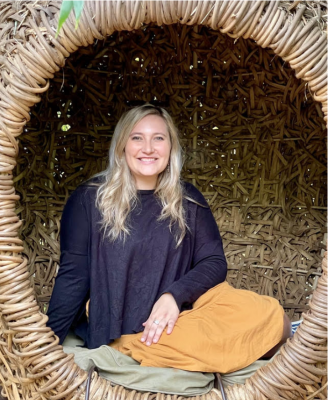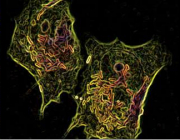Principal Investigator
_______________________________________________________________________________________________________________________
|
Shelley M. Payne, Ph.D. |
|
|
|
EDUCATION: B.A. Rice University, 1972 Ph.D. Texas Health Science Center (Dallas), 1977 POSTDOC: University of California at Berkeley Our studies focus on the genetics and regulation of iron acquisition systems and other virulence factors of Shigella and Vibrio species. The iron transport systems are of interest because the ability of potential pathogens to acquire iron from the host is an important determinant of microbial virulence. Iron is required for growth of bacteria, but little free iron is available in mammalian hosts. Many bacteria have been found to secrete high affinity iron-binding compounds, or siderophores, which may function to remove iron from host proteins and make it available to the microorganism for growth in vivo. Vibrio species produce a variety of siderophores and iron-regulated outer membrane proteins. In response to iron deprivation, Vibrio cholerae synthesizes a norspermadine containing siderophore, and five cell surface proteins, including receptors for the siderophore and for heme. The Shigella species, a group of enteric pathogens, have at least three distinct iron transport systems. Two of these, the aerobactin and enterobactin systems, consist of siderophores and their associated outer membrane receptor proteins. Expression of these systems is regulated at the level of transcription by the concentration of iron within the cell. A third pathway is required for the transport and utilization of iron in the form of heme. Virulence assays of mutants defective in one or more of these systems suggest that siderophores provide iron in the extracellular environment while heme transport is utilized by Shigella growing intracellularly within epithelial cells. A heme-binding protein is found on the surface of wild-type Shigellae. Although this protein is not required for heme transport, it is required for invasion of intestinal epithelial cells by S. flexneri. The protein allows the bacteria to bind large amounts of heme on the surface of the bacteria and promotes the attachment of the bacteria to the host cells. This protein is encoded on a large 220 kilobase plasmid, and its synthesis is regulated by both temperature and pH. Analysis of regulatory mutants indicates that at least two loci, one chromosomal and one plasmid encoded, are responsible for the regulation of the structural gene for this cell surface protein. Genetic and recombinant DNA techniques are being used to characterize chromosomal and plasmid sequences involved in iron transport and invasion in these enteric pathogens. The genes have been cloned and gene fusions have been constructed to measure the expression of these genes under different environmental conditions. Techniques have been developed also to measure gene expression and synthesis of virulence-associated proteins by S. flexneri growing within host cells. These studies will allow us to determine the molecular mechanisms of iron acquisition and ultimately to assess the roles of these systems in bacterial infections. |
Senior Scientists
_______________________________________________________________________________________________________________________
| Alex R. Mey, Ph.D. | |
|
EDUCATION: B.A. Biology, University of Texas at Austin, 1994 Ph.D. Molecular Biology, University of Texas at Austin, 2002 I am interested in how V. cholerae senses and responds to environmental signals, and how these signals are integrated into the regulation of virulence gene expression and pathogenesis in the host. My most recent studies have focused on the role of amino acids in the expression of the virulence gene regulator ToxR. Through this work, I have uncovered a previously unknown link between ToxR and the global regulator CsrA, which is involved in controlling various cellular processes including carbon metabolism, quorum sensing, and virulence in response to extracellular signals. By linking environmental sensing to the ToxR regulon, CsrA may effectively act as a switch that controls pathogenesis in response environmental stimuli. We are currently working to understand more completely the role of CsrA in V. cholerae cellular metabolism and virulence. In my spare time, I enjoy reading, playing piano, baking, hiking, traveling, and spending time with my family. |
Research Technicians
_______________________________________________________________________________________________________________________
| Carolyn Fisher | |

|
EDUCATION: B.S. Texas A&M University, Biomedical Science, 1979 In my 10+ years in the Payne lab I have worked on various projects studying both Vibrio cholerae and Shigella flexneri. My current project involves the study of manganese homeostasis in Vibrio cholerae. In addition to research, I help keep the lab running by purchasing supplies and equipment. Outside the lab, I enjoy taking care of my animals which include chickens, a horse, cattle, and two dogs and spending time with family. |
| Austin Pham | |

|
EDUCATION: B.S. University of Texas at Austin, Human Biology, 2023 Almost all organisms require iron to survive; consequently, they have evolved in different ways to obtain this essential element from the environment. Under conditions of low oxygen and pH, which are the conditions that gastrointestinal pathogens often encounter in the host, iron is predominately found in its reduced form known as ferrous iron (Fe2+). The ferrous iron transport system, Feo, is the most widespread transporter of Fe2+ in bacteria, and it is linked to virulence in several pathogens. The Feo system in the human pathogen Vibrio cholerae, the bacterium that causes cholera, is encoded by the feo operon, which contains three genes: feoA, feoB, and feoC. The Feo proteins work together to form a membrane transporter. Despite Feo being widespread among bacteria, its mechanism is still poorly understood. My research focuses on characterizing the interaction between FeoB and FeoC and its significance for Feo-mediated iron transport. In my free time, I enjoy playing the piano and am currently working on my jazz improvisation. Additionally, my favorite pastimes are playing volleyball and soccer. When I am not in the lab, you will most likely find me at the UT Austin Turtle Pond. |
Postdoctoral Fellow
_______________________________________________________________________________________________________________________
| Grace Kago | |
|
|
EDUCATION: B.A. McDaniel College, Biology, 2010 Ph.D. The University of Texas at Austin, Cell and Molecular Biology, 2022
When bacteria encounter environments that are stressful, they implement a global reprogramming of their genetic expression that allows them to switch their metabolism from "growth" mode to "survival" mode. For pathogenic bacteria whose function includes invading and spreading in a host, these response processes are tightly regulated especially in the context of infection. My research interests are focused on characterizing the way that Shigella spp. response to certain environments intersects with their virulence.
Outside of the lab, I can be found brainstorming ways to translate science concepts into different African languages and spending time with friends and family.
|
Graduate Students
_______________________________________________________________________________________________________________________
| Ellen B. Gouws | |

|
EDUCATION: B.S. University of Kentucky, Agricultural and Medical Biotechnology, 2018. Successful Shigella infection require spread from adjacent colonic epithelial cells. My research focuses on Shigella flexneri virulence gene regulation, specifically, IcsA which is responsible for shigella’s movement and spread in the host through actin based motility. Outside of lab you will find me participating in dance cardio, reading, and spending time with my friends, family, and cats.
|
Undergraduate Students
_______________________________________________________________________________________________________________________
|
Mason Yang Maddie Harris Lauren Matus |




